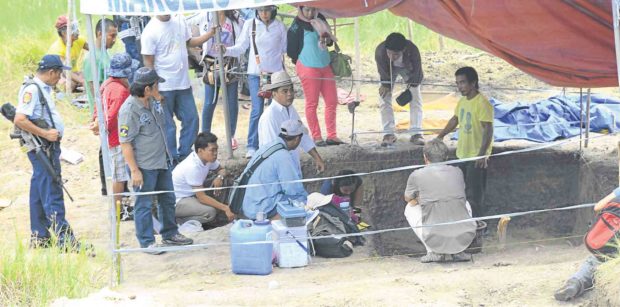National Museum receives fossils, artifacts from Kalinga dig site

Artifacts and fossils, including that of an ancient rhinoceros, are unearthed in this site on Elephant Hill in Rizal town, Kalinga province. —PHOTO COURTESY OF RIZAL LGU
TABUK CITY—The National Museum of the Philippines (NMP) has taken custody of animal bones believed to be 1,000 years old that were exhumed from Barangay San Pedro in Rizal town in Kalinga province.
The fossils of a rhinoceros, elephants and crocodiles will be returned once experts examine and curate the bone fragments dug up from the 16-square-kilometer Elephant Hill in the town, said Myla Dipalog, Rizal tourism officer.
The artifacts were collected by a team led by French Ambassador to the Philippines Thierry Mathou and Museum Director Jeremy Barns on Friday.
Mathou promised to initiate more excavations in the area.
The interest of National Museum scientists, archaeologists and researchers in the virtually intact remains of a rhinoceros and other fossils at Sitio Greenhills has motivated the local government to plan for Elephant Hill’s tourism prospects.
Rizal has become an archaeological landmark since the discovery there of ancient tools and animal fossils, including bone artifacts, that many believe date back to more than 800,000 years.
On March 28, 1977, then President Ferdinand Marcos declared the area as an archaeological reserve.
The town has been promoting Elephant Hill as a world archaeological destination.
The NMP took custody of the artifacts and fossils for safekeeping, but Rizal officials were informed they could deposit and display these in the town provided they built a museum.
Based on research accounts, the jaw of a rhinoceros was the first artifact discovered there in 1935.
Following three successive visits by foreign archaeologists, the NMP conducted its own excavation in 1971 and identified 68 sites where fossils and artifacts were unearthed near the surface.
In 2001, another excavation led to the discovery of a tusk.
In 2014, paleontologist Thomas Ingicco, a professor of the University of the Philippines, supervised the dig site.














